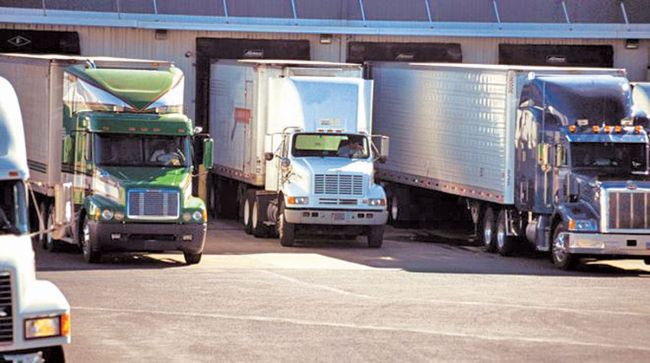Truck tonnage in July declined by 3% compared with the same month in 2022, the fifth consecutive year-over-year decline and an indication that softness in the freight market persists, American Trucking Associations reported.
“Headwinds for freight remained in July, pushing the truck tonnage index lower,” ATA Chief Economist Bob Costello said in an Aug. 22 news release.
“As has been the case for several months, a multitude of factors have caused a recession in freight, including sluggish spending on goods by households as consumers traveled more and went to concerts this summer. Less home construction, falling factory output, and shippers consolidating freight into fewer shipments compared with the frenzy during the goods-buying spree at the height of the pandemic are also significant drags on tonnage.”
The ATA advanced seasonally adjusted For-Hire Truck Tonnage Index equaled 112.9 in July, down from 116.2 last year. The index also slipped 3.1% when compared with June, when it measured 116.5.

Costello
In calculating the index, 100 represents 2015. The index is dominated by contract freight, as opposed to spot market freight.
According to ATA, trucking represents 72.6% of tonnage carried by all modes of domestic freight transportation, including manufactured and retail goods. Trucks hauled 11.46 billion tons of freight in 2022, and motor carriers collected $940.8 billion, or 80.7% of total revenue earned by all transport modes.
Headwinds for freight remained in July, pushing the truck tonnage #index lower. https://t.co/AeUaMWYGDi
— American Trucking (@TRUCKINGdotORG) August 22, 2023
Another monthly report, the Logistics Managers’ Index, in July showed significant slowing of the transportation sector. Its authors say freight is clearly in a recession as the index came in at 45.4. One year ago, the index was at 60.7. It marked the third consecutive month of contraction for the overall index, but also the fifth straight month that the index has reached a new all-time low.
The July number is fractionally lower than June’s 45.6.

Rogers
Arizona State University business professor Dale Rogers, an author of the index, said July’s decline may have been impacted by the abrupt shutdown of LTL carrier Yellow Corp. and the uncertainty leading up to the July 31 deadline for UPS Inc. and the Teamsters union to reach terms on a five-year contract.
“Yellow is not the only carrier having a rough go financially. Knight-Swift reported a 21% drop in revenue during Q2. Many other carriers, including Saia, Hub Group and Ryder, were down in the second quarter,” Rogers said. “Markets are naturally pulled toward equilibrium between supply and demand.
“Previous LMI reports had speculated that the freight recession would eventually end when and if capacity began to exit the market. Yellow’s shutdown may be the beginning of that regression to the norm.”

Ryan Manthir of Shell Global Solutions and Michael Grahe of Navistar discuss the future of the internal combustion engine. Tune in above or by going to RoadSigns.ttnews.com.
Researchers at Arizona State, Colorado State University, Florida Atlantic University, Rutgers University and the University of Nevada-Reno compile the report each month in conjunction with the Council of Supply Chain Management Professionals.
A reading above 50 indicates economic growth, while a reading below 50 indicates that the economy is retracting. The LMI is a combination of eight unique components that make up the logistics industry, including inventory levels and costs; warehousing capacity, utilization and prices; and transportation capacity, utilization and prices.
Meanwhile, the July DAT Truckload Volume Index was down in three categories it measures compared with the same period in 2022. However, it was up in two areas when tallied against year-ago levels.
- Van TVI dropped 3% year-over-year to 226 and was down 7% from June’s number.
- Refrigerated TVI climbed 1.2% to 169 compared with a year ago but was down 3% when measured against June.
- Flatbed TVI increased 3.5% year-over-year to 238, but that’s down 12.8% compared with June.

Adamo
DAT said despite the month-over-month declines, the reefer and flatbed TVI numbers were the highest on record for July as fresh and frozen food, metals, machinery, construction materials and other seasonal freight moved through supply chains.
“Shippers faced service disruptions at the ports and in the less-than-truckload sector but were able to secure van capacity without causing the needle to move on spot rates and volumes,” DAT Chief of Analytics Ken Adamo said in a statement.
DAT said that rates for contract and spot freight declined in July.
The spot van rate was $2.07 per mile, 56 cents lower than in July 2022 and down 1 cent from June.
The spot reefer rate was $2.44, 60 cents lower than a year ago and down 3 cents from June. The spot flatbed rate was $2.54, 72 cents lower than a year ago and down 7 cents from June.
Linehaul rates, which subtract an amount equal to a fuel surcharge, declined as well. DAT’s benchmark van linehaul rate was $1.63 per mile, down 2 cents compared with June.






